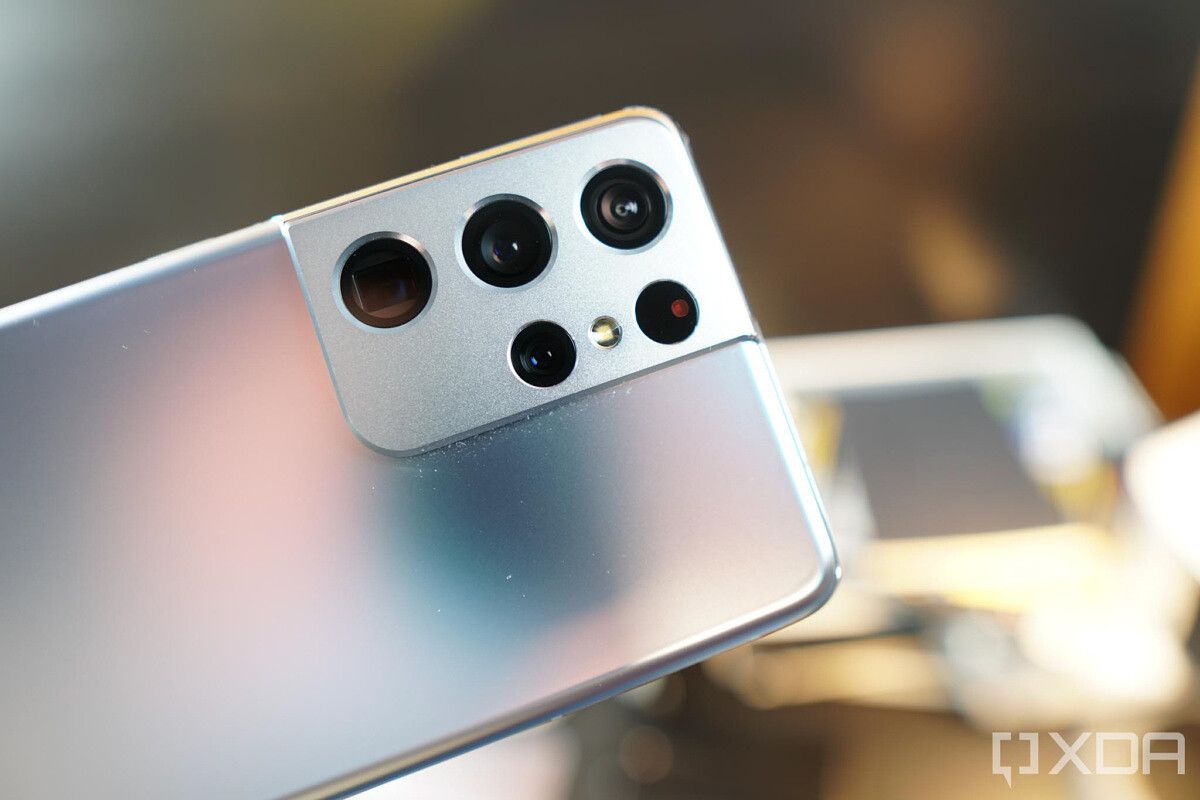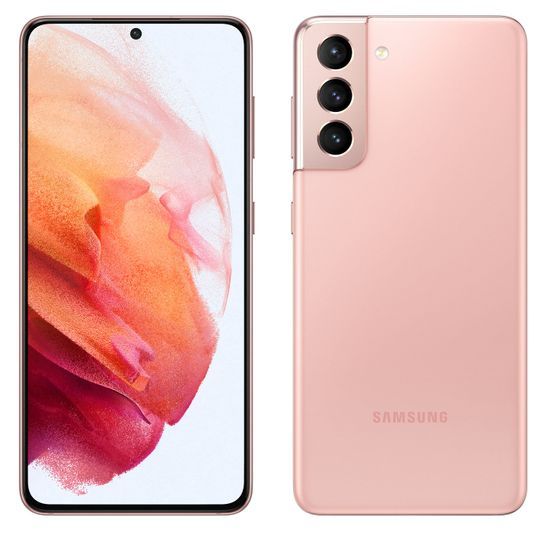Which Galaxy S21 should you buy? Regular, Plus or Ultra?
The Samsung Galaxy S21 family is here, and with three different phones to choose from, Samsung says there is a Galaxy S21 for everyone. Unlike previous years, not all of the Galaxy S21 family are created equally: the Galaxy S21 and Galaxy S21 Plus are designed for those who want an affordable flagship experience, while the Galaxy S21 Ultra offers everything you could want in a smartphone.
There are a lot of similarities, but quite a few differences – even between the Galaxy S21 and Galaxy S21 Plus – so what are they and which one should you buy? Here, we break out all the similarities, differences and why you should (or shouldn’t) buy each model!
- This is the new hero color for the Galaxy S21 series and it looks fantastic! It's a gorgeous light purple (lilac) with a matte finish and a gold trip around the edge of the phone as well as the camera surround. While the Gold and Purple combination is quite unique, it might not be for everyone but we like it!
- Very similar in color to the Phantom Gray of the regular Galaxy S21, the Phantom Black color option is for the Plus and Ultra variants and offers a muted color scheme for anyone who doesn't want their phone to stand out or define them. It's reserved but likely to be one of the most popular colors!
- Silver is one of my favorite colors and what makes this phone color really stand out for me is that the rear color is a darker shade of silver and the trim and camera surround provide the contrast with a shinier, much lighter silver. It looks unique and stands out while remaining quite reserved.
Each phone has a place in the family, and there are some subtle and not-so-subtle differences between all three devices that are worth considering. Here’s the full specs list for each of the three devices:
Samsung Galaxy S21, Galaxy S21 Plus, and Galaxy S21 Ultra full specs list
| Specifications | Samsung Galaxy S21 | Samsung Galaxy S21+ | Samsung Galaxy S21 Ultra |
|---|---|---|---|
| Build |
|
|
|
| Dimensions & Weight |
|
|
|
| Display |
|
|
|
| SoC |
|
|
|
| RAM & Storage |
|
|
|
| Battery & Charging |
|
|
|
| Security | Ultrasonic In-Display Fingerprint Scanner | Ultrasonic In-Display Fingerprint Scanner | Ultrasonic In-Display Fingerprint Scanner |
| Rear Camera(s) |
|
|
Video:
|
| Front Camera(s) | 10MP, f/2.2, 1.22µm, Dual Pixel PDAF | 10MP, f/2.2, 1.22µm, Dual Pixel PDAF | 40MP, f/2.2, 0.7µm, PDAF |
| Port(s) | USB 3.2 Type-C | USB 3.2 Type-C | USB 3.2 Type-C |
| Audio |
|
|
|
| Connectivity |
|
|
|
| Software | Samsung One UI 3.1 based on Android 11 | Samsung One UI 3.1 based on Android 11 | Samsung One UI 3.1 based on Android 11 |
| Other Features |
|
|
|
| Colors |
|
|
|
What’s common across all three devices, what’s different, and which one should you buy? Let’s find out!
Common features across the Galaxy S21 series

Several features are common across all of the Galaxy S21 family, although some of these have been implemented slightly differently between the Galaxy S21 / S21 Plus and the Galaxy S21 Ultra.
The cameras on all the devices feature a camera surround that is designed to stand out from the rest of the device, with the lenses organized in a vertical layout. The latest Qualcomm Snapdragon 888 processor powers all three phones with various RAM and storage options depending on which model you go for. There are also multiple cameras on each model, and zoom plays a large part in the Galaxy S21 experience, although the zoom level depends on which phone you buy.

All the devices support the new Single Take 2.0 feature in the camera that analyses more frames per second – including things like Dynamic Slo-mo – and finds the most compelling moment of action. Single Take means you can press the camera shutter once, and then it’ll capture a series of different photos and videos using all the different features, which you can then choose from. Rather than have to pick one particular mode, Single Take lets you take multiple shots with just one tap of the camera button, so you’re far less likely to miss the perfect shot. The new Director View and Vlogger View are designed to help you become a videographer on the go. The former lets you see your scene from multiple viewpoints while filming and switch between lenses without needing to stop recording. The Vlogger View lets you capture using both the front and rear cameras so you can capture the action as well as your reactions; this is perfect if you want to capture moments such as your child’s first steps, a sports game, or more. There’s also a host of other Galaxy S21 camera features, including unlimited video recording, multi-mic recording, and a new enhanced portrait mode for studio-like portrait photography.

Like on any Samsung smartphone, the display is one of the best you can find on any smartphone. Each device features an Infinity-O display with a 120Hz refresh rate and Dynamic Refresh Rate that will automatically adjust (from 10Hz or 48Hz depending on the model) up to 120Hz depending on the content that’s displayed on the screen. All the devices also feature an improved in-display fingerprint sensor that’s 1.7 times larger and a new private sharing feature that lets you control how long someone can view the content you share with them, as well as Fast Wireless Charging, USB PD 3.0 fast wired charging, and Wireless reverse charging to help you charge other devices and accessories.
Now that you know the common features across the range let’s look at the key differences between each of the models and who should buy each one.
Who should buy the Galaxy S21?

If you’re looking for a great entry into the Samsung smartphone experience that doesn’t break the bank, the regular Galaxy S21 is a great device to buy. At a starting price of $799 before any discounts, it’s affordable yet offers many features that are available in the more expensive models. Yet, it’s definitely not the powerhouse that the Galaxy S21 Ultra is, so if you’re hoping for the most feature-rich experience, the regular Galaxy S21 is not the device for you. The regular Galaxy S21 offers all of the key Galaxy S21 family features, with the 6.2-inch Infinity-O display offering FHD+ resolution, HDR10+ certification, and adaptive refresh rate that will automatically adjust from 48Hz to 120Hz depending on the content on the screen. There’s also a new Eye Comfort Shield feature that automatically adjusts blue light levels to reduce eye strain.
A great entry into the Galaxy experience at an affordable price
The S21 has three rear cameras, including a 12MP ultra-wide camera with 120° field-of-view, f/2.2 aperture, and 1.4µm pixel size. The 12MP wide camera features dual-pixel technology for faster focusing, OIS for steadier video recording and low-light photography, f/1.8 aperture, and 1.8µm pixel size. The third rear camera is a 64MP telephoto camera, which offers 3X zoom and is equipped with OIS for steadier zoom shots, Phase Detection autofocus, f/2.0 aperture, and 0.8µm pixel size. The Galaxy S21 also supports all of the new camera features, including Single Take 2.0 to take a variety of different shots just by tapping the button once, Director View to see your scene from multiple viewpoints and switch lenses mid-shoot, and Enhanced Portrait mode for better studio-like portrait shots that are captured using AI. The new Qualcomm Snapdragon 888 processor powers the entire package with 8GB of RAM and either 128GB or 256GB of storage.
- If you want an affordable yet feature-rich entry into the Galaxy S21 family, this is the device for you. There's tons of features and Samsung hasn't skimped on the features that make the S21 special. You can also get it in Pink and this gorgeous Phantom Violet!
Who should buy the S21 Plus?

The Galaxy S21 Plus won’t appeal to many people, but it’s not designed for everyone. If you’re interested in the entry-level Galaxy S21 or want a big-screen Galaxy S21 experience that doesn’t break the bank (like the Galaxy S21 Ultra will for many people), the Galaxy S21 Plus is the right phone for you. It offers virtually everything the Galaxy S21 does, including the same processor, RAM, storage, and camera, but there are a few key differences. The screen is substantially larger at 6.7-inches, the battery is 20% larger at 4,800 mAh, and the Galaxy S21 Plus also supports the Ultra Wide Band feature found on the Galaxy S21 Ultra. The back is also glass like the Galaxy S21 Ultra, versus the plastic back found on the Galaxy S21. Other than those differences, however, the Galaxy S21 Plus is basically a larger version of the Galaxy S21.
- Not many people should buy the Galaxy S21 Plus but if you want an affordable experience that is less-kitchen-sink and more refined yet has a big enough screen and battery to keep you going, the Galaxy S21 Plus is a good middle-ground phone to buy!
Who should buy the Galaxy S21 Ultra?

While the Galaxy S21 and Galaxy S21 Plus are designed for those who want the latest flagship experience at a more accessible price point than last year – where the S20 started at $999.99 and the S20 Plus at $1199.99 – the Galaxy S21 Ultra is designed to offer the best-of-the-best experience that leaves no stone unturned. That’s not to say it isn’t also available at a more affordable price: the starting price of $1,199.99 is $200 cheaper than last year’s Note 20 Ultra. To offer the ultimate flagship experience, you have to offer everything, and that’s the best way to look at the Galaxy S21 Ultra: it’s the phone that does everything. Unlike last year where the S20 Ultra was a bit better than the Galaxy S20 Plus, the Ultra is the phone to beat and is considerably different from its namesake siblings.

The display is a 6.8-inch curved Dynamic AMOLED display with WQHD+ resolution, and unlike previous smartphones, it supports the full QHD+ resolution at the 120Hz frame rate. Also, unlike its siblings, it can automatically adjust from 10Hz (vs 48Hz) to 120Hz. This means static content like reading books or browsing photos will considerably reduce the refresh rate and, therefore, likely use less battery. The most noticeable differences are in the cameras, where you’ll find several new features and welcome improvements over last year’s devices. The rear has four cameras with, for the first time on a smartphone, two telephoto lenses. The first telephoto lens is a 10MP dual-pixel lens offering 3X, while the second is 10MP and offers 10X zoom. Depending on the range you’re shooting from, the camera will automatically switch between the two telephoto lenses, and when they combine, the Galaxy S21 Ultra offers up to 100X Space Zoom.

Samsung has used the Space Zoom branding before – with last year’s Galaxy S20 Ultra – and one of the biggest problems was how shaky and ultimately unusable the camera was at the highest zoom level. This year, the Galaxy S21 Ultra features a new Zoom Lock feature to stabilize the shot. Samsung claims this offers tripod-like stability – which we’ll reserve judgment on until we test the camera further – but any improvement is bound to be significant over last year’s Space Zoom. Night mode in the camera has also had some improvements with an improved bright night sensor and nona-binning, resulting in improved low light photos. Nona-binning allows Samsung to take the 108MP primary camera and combine 9 pixels to make 1 larger nona-pixel. This means it will output 12MP images, but instead of the 0.8µm hardware pixel size, nona-binning results in a large 2.4µm pixel size that should help let in a lot more light.

That main camera is still 108MP with Phase Detection autofocus and f/1.8 aperture but uses new hardware. The ultra-wide camera is the same 12MP dual pixel autofocus camera with a 120° field of view found in the Galaxy S21 series. Samsung has also added laser autofocus, which should mean lightning-fast and far more reliable focus speeds regardless of the lighting conditions. The differences don’t just stop at the camera and the display; there are also huge improvements across the rest of the Galaxy S21 Ultra experience. Instead of 8GB RAM, you get either 12GB RAM (with 128GB or 256GB of storage) or 16GB RAM with the top storage variant (512GB). There’s a 5,000 mAh battery, and the Galaxy S21 Ultra also supports Ultra Wide Band and is the first Samsung smartphone to support the latest Wi-Fi 6E standard. One of the biggest reasons to buy the Galaxy S21 Ultra could also be a new feature to the Galaxy S series: a Galaxy S device supports Samsung’s iconic S-Pen for the first time. Unlike the Galaxy Note range, which made the S-Pen so special and ubiquitous to Samsung devices, the Ultra – which is the only member of the S21 family to support the S-Pen – doesn’t come with the S-Pen built-in. Instead, it’s available for $39 standalone or for $69 with a case that features a placeholder for it. If you want all that the Galaxy S21 has to offer and want to use the S-Pen, the Galaxy S21 Ultra is the one for you.
- If you want a device that does absolutely everything and/or you're a power user, look no further than the Galaxy S21 Ultra. This is the phone that has it all, does it all, and after a fairly substantial outlay, will keep you going for years to come. If you need the best of the best, the Galaxy S21 Ultra is the phone for you.
Should you buy the Galaxy S21, Galaxy S21 Plus, or Galaxy S21 Ultra?

We’ve already broken down the reason to buy each phone, but should you buy any of them and if so, which one should you buy? The Galaxy S21 is an easy phone to recommend. It offers many flagship features at a great starting price, especially when you consider all the Galaxy S21 deals available to save you further. On the other hand, the Galaxy S21 Plus is a phone that’s hard to recommend for most people as it doesn’t offer a lot of features above and beyond what’s available in the Galaxy S21. If you want that bigger battery and bigger display, then it could be worth buying, but it’s worth considering if that extra $200 outlay is really worth it to you. The Galaxy S21 Ultra is the phone that’s likely to be the most popular, much like the S20 Ultra and Note 20 Ultra were. It’s the phone that does it all and really lives up to Samsung’s billing of catering to the power users. There’s very little you could want that isn’t included in the Galaxy S21 Ultra and at a lower starting price than last year, plus plenty of Galaxy S21 Ultra deals to help you save more, it’s likely to continue being one of Samsung’s most popular product ranges.
The post Which Galaxy S21 should you buy? Regular, Plus or Ultra? appeared first on xda-developers.
from xda-developers https://ift.tt/3bDxmBe
via IFTTT



Aucun commentaire: